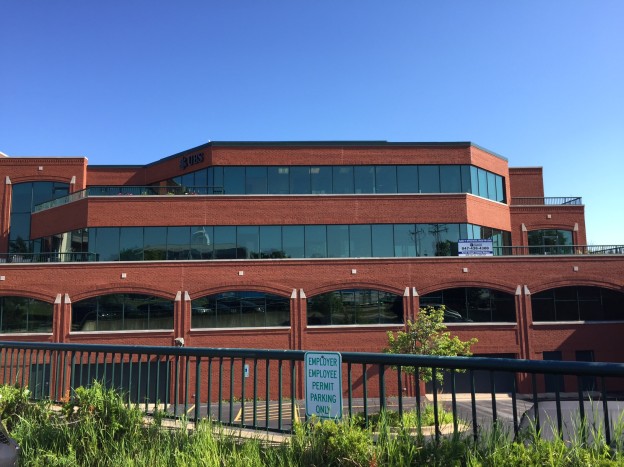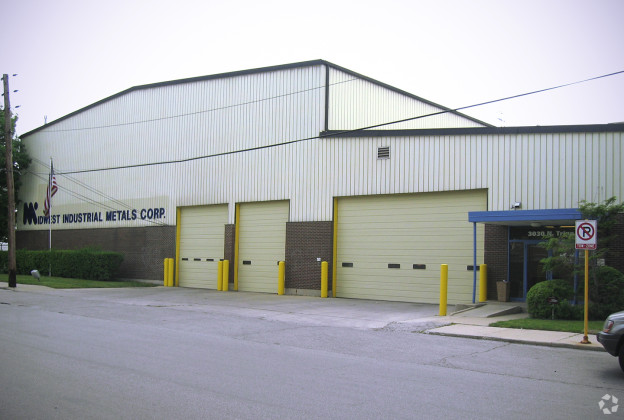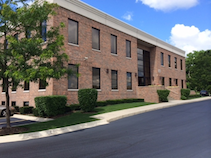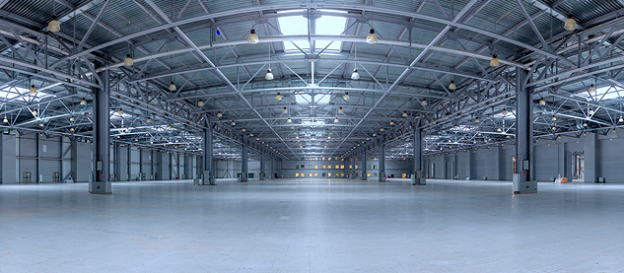" Chicagoland Commercial Real Estate (“CCRE”) has worked as exclusive leasing agents and property managers for a number of my clients that own commercial real estate throughout the Chicago area.
The brokerage team assisted with the acquisition and disposition of many properties for various clients. CCRE has a deep knowledge of commercial real estate and can successfully advise investors through sales transactions that can often be complex. They honestly understand “The Process” and consistently produce results that exceed the market in both leasing and management.
Kerry Lavalle | Partner | Lavalle Law, LTD.
" Harper College has called on Randy Olczyk several times over the past 4 years to assist us with leasing warehouse space. We are educators, not real estate experts. That is where Randy shines. We are not always aware of the consequences of our wishes and wants. Randy has guided us through the process quite successfully. He makes the leasing and purchasing decisions much less stressful. I highly recommend him for property procurement needs throughout the Chicagoland area.
Nancy Savard | Operations Services | Harper College
" I’ve used Chicagoland Commercial as a receiver on distressed real estate, as a manager of OREO properties, and as a listing agent on commercial real estate. I have been impressed with their knowledge of the local market. They have successfully marketed and sold numerous properties for our financial institutions. Additionally they have reliably handled receivership and management responsibilities on various properties, often advising us to take appropriate actions to protect the values of our properties. Chicagoland Commercial has always been extremely responsive, returning phone calls and handling emergencies promptly, including weekends and holidays. Ongoing communication on all matters they handle has been a demonstrated strength of theirs. In addition to the reasons I’ve already listed, everyone I’ve met at Chicagoland Commercial are people with whom I enjoy interacting – whether it’s over a business lunch, during a round of golf, or at their holiday party. I’d highly recommend them.
Gary Pleickhardt | Vice President | Managed Assets Division Wintrust Financial Corporation
" Corix Utilities was new to the Chicago area with a large scope project on a tight deadline partnering with a local business. We were very fortunate to engage Randy and Chicagoland Commercial Real Estate; we needed a space that would suit our specialized business needs, it had to be “budget friendly”, and we needed immediate occupancy. Randy came through with aces on all our needs! We’ve recommended Randy to our local partner, and will be reaching out to Randy and CCRE again as we expand our operation.
Bob Egerer | Regional Director | Corix Utilities
" We have been doing business with Randy and his team at Chicagoland Commercial Real Estate for several years. Our Business Development Manager connected with Chicagoland as a potential client of our firm & our relationship quickly developed into a mutually beneficial strategic partnership. Randy and his team have helped out many of our clients, with great satisfaction, acquiring and leasing commercial space. Randy and his team get it!
Jeffrey A. Krug | Owner | J Krug and Associates, Inc.
https://www.jkrug.com
" Verinon Technology Solutions has been working with Chicagoland Commercial Real Estate for over 10 years. We first utilized their tenant advisory services to help us find our office space in Arlington Heights,Illinois. After several years of leasing space for our business, we became interested in acquiring our own office building with their assistance. CCRE was very knowledgeable and created tremendous value for us during the entire acquisition process. They are not only experts in commercial real estate, but have an extensive knowledge of finance,investments,marketing & communication. Over the years, we have grown to greatly appreciate their consistent drive to succeed as well as their character. We are genuinely fortunate to have them as our trusted real estate advisors.
Tewabe Ayenew | President | Verinon Technology Solutions
" As the Commercial Sales Coordinator for Von Sydows Moving and Storage, Inc., I am in and out of office and industrial buildings everyday. I can honestly say that the properties managed and operated by Chicagoland Commercial Real Estate are extremely well run and always maintained to the highest standards. There is little doubt as to why CCRE is a leader in it's field.
Jim Schwantz | Commercial Sales Coordinator | Von Sydow's Moving and Storage
" We’ve leased from Chicago Commercial Real Estate for over 5 years. The commercial property management team has consistently addressed our needs in a timely and professional manner. They send out memos updating us on anything effecting our leased space or the building, keeping us well informed. In addition, we have expanded to additional offices in other locations. They assisted us in finding lease space in both Rockford and Rolling Meadows, negotiating a favorable lease in each location. We have been very satisfied with their service.
Robert Spaulding | COO | HCP Financial
" I have worked closely with the principals and team at Chicagoland Commercial Real Estate for over ten years. The company culture encourages the team to operate with a passion to ensure their clients are using appropriate and efficient products in the ever-changing world of commercial real estate. Chicagoland Commercial Real Estate operates through a relationship based approach and are always ready to provide solutions in anticipation of your future needs. The team is well respected by clients and peers and has access to resources that allow clients to feel confident in their decisions regarding their product. I highly recommend Chicagoland Commercial Real Estate.
Connie Lavin | Vice President | First Midwest Bank
" "MY STATE FARM AGENCY WAS IN THE SAME LOCATION FOR 10 YEARS. WHEN I GOT THE LEASE RENEWAL OFFER FROM MY LANDLORD, I KNEW I NEEDED TO LOOK AROUND AT THE MARKET. I CONTACTED RANDY, AT CHICAGOLAND COMMERCIAL REAL ESTATE. RANDY SPENT A WHOLE DAY WITH ME, IN SUB ZERO WEATHER, LOOKING AT MANY DIFFERENT LOCATIONS. RANDY WAS INSTRUMENTAL IN HELPING ME SELECT A PLACE THAT BEST FIT MY NEEDS AND BUDGET. I EXPLORED SPACES THAT I WOULD NOT HAVE CONSIDERED ON MY OWN. AFTER DECIDING ON A LOCATION, RANDY DID ALL OF THE NEGOTIATIONS WITH MY NEW LANDLORD, SECURING MANY CONCESSIONS. I AM NOW IN MORE SPACE, WITH MUCH LOWER RENT. CHICAGOLAND COMMERCIAL TOOK ALL OF THE WORK OF SHOPPING FOR AND NEGOTIATING SPACE AWAY FROM ME, SO I COULD FOCUS ON MY BUSINESS.
NOT TO MENTION, I DIDN’T PAY ANY FEE! WOULD HIGHLY RECOMMEND THEM!"
Kim Cooper CASL, CHFC | State Farm Insurance
" I contacted Chicagoland Commercial Real Estate when I began looking for a larger space for my business. They quickly came up with numerous options, one of which turned out to be the perfect space for us. Chicagoland was then instrumental in working out all of the necessary lease details, which not only included negotiating a very good rent, but also an extensive build out on our new space. They then proceeded in the ensuing months to oversee the build out, to make sure that it was finished on time, and done correctly according to the provisions in our lease. They were always quick to handle any problems or concerns that we had during this time. I would not hesitate to use them again or to recommend them to anyone else.
Sherri Hodes | Owner | Buffalo Grove Sign*A*Rama
http://bgsignarama.com
" Our firm recently utilized the services of Chicagoland Commercial Real Estate’s Tenant Advisory Division to assist us in finding a larger office space. Even though we ultimately ended up in the same building that we are presently located in, we looked at comparable spaces in several other locations. The “process” allowed us to understand local market conditions and assisted us with guidance from Chicagoland Commercial Real Estate’s Tenant Advisory Division in negotiating confidently with our present landlord.
George Sarfatty, A.I.A. | President | Sarfatty Associates, LTD
" I had a situation in which I had three rapidly growing companies in three locations which was becoming a struggle to properly manage. I was working on relocating one company and renewing in existing space for the other entities. I began working with Chicagoland Commercial and they quickly analyzed my real estate deficiencies and recommended consolidating all o my operations into one facility. Not only did Chicagoland reduce my rental exposure, but enabled me to better manage my operation to increase gross revenues substantially! I will always consult Chicagoland Commercial for my future real estate needs and highly recommend them to any other business owner.
Yishai Broner | President/CEO | VNA Healthtrends
" I want to thank you again for assisting our team with renegotiating the various facility spaces for us. The Chicagoland Commercial Real Estates Tenant Advisory division was efficient and effective at achieving our desired results. I know there is a lot of work completed behind the scenes and we really appreciate the support you and your team provided to us during the entire process. Again, thanks!
Mark V. Lavin | Chief Admin Officer | West Corporation





